

Reviews


A common thread in the works curated point to silences, known or unknown, around topics such as capital punishment, extraction, human rights, pleasure, and more. This reminds me of what is made clear about silence in Audre Lorde’s 1977 essay on “The Transformation of Silence Into Language and Action.” Whether we are silenced by others or silence ourselves, it is our own voice, and how we use it that will eventually free us in the end.
READSilence, (Feigned) Indifference and Kinship: A Review of African Express—Short Station
Ubuntu Film Club and Think Africa once again join forces with the Helsinki International Film Festival “Love & Anarchy” in order to deliver varied tales from the continent.
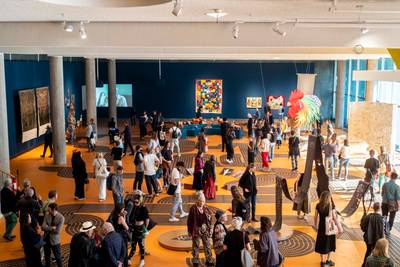

HKW is in an exciting phase of ‘reconstruction’ following the appointment of the new director, Prof. Dr. Bonaventure Soh Bejeng Ndikung, in June 2021. The news of the Cameroon-born curator’s engagement as the institute’s first nonwhite director sent a bolt of excitement through Berlin’s art scene, where large institutions are led by white, largely male directors, and where artists of color, often instrumentalized to garner a progressive title for the city, still face incidences of institutional racism.
READNurturing Seeds of Resistance: A Review of O Quilombismo at Berlin’s HKW
Berlin’s Haus der Kulturen der Welt (HKW), in English, the ‘House of World Cultures’, reopened this year under the leadership of its first non-white director, Prof. Dr Bonaventure Soh Bejeng Ndikung. Its opening exhibition centers the philosophy and lineage of Afro-Brazilian resistance towns known as quilombos and features works by over 65 artists and collectives, all of whom belong to the Global Majority. What does this new chapter mean for the institution and the city, and does it deliver on its egalitarian promise?


In an art world obsessed with the urge to find the next new thing and benefit from it, can a sleek, high production value exhibition showcasing the work of 15 - 23 year old artists challenge the love-hate relationship with the youth? Generation 2023 is balanced and diverse, but its fixation on youth is double edged.
READThere Are No Enfants Terribles Here: A Review of Generation 2023
In an art world obsessed with the urge to find the next new thing and benefit from it, can a sleek, high production value exhibition showcasing the work of 15 - 23 year old artists challenge the love-hate relationship with the youth? Generation 2023 is balanced and diverse, but its fixation on youth is double edged.
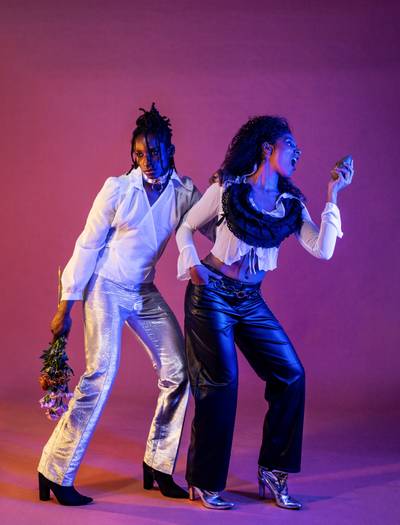

In what ways does ‘One Drop’, a performance developed and executed by racialized others in Finland and elsewhere, express love in its enactment of mutually transforming anti-racism communication?
READAnti-Racist Love in Sonya Lindfors’ ‘One Drop’
In what ways does ‘One Drop’, a performance developed and executed by racialized others in Finland and elsewhere, express love in its enactment of mutually transforming anti-racism communication?


One could think of FLIP!, with high respect to popular culture, as more strictly a popular culture exhibition, meant for hanging out and digging – not to support the dichotomy of art vs. popular culture but to accentuate meaningful differences in interpretation, experience, and atmosphere. If so, why not make this more into popular culture? Go for the ‘cool’, or build an ‘awesome’ experience? Could this be Artsi’s path in the future?
READMany Moves but No Broken Bones: A Review of ‘Flip! Skate & Art’
FLIP! Skate & Art at the Vantaa Art Museum Artsi presents the work of artists who have produced art about skateboarding and/or learned from it artistically. Although lacking the ability to go beyond aesthetic impressions and bring out edge, depth, and paths for new thinking, the exhibition contains some great artworks and builds an archive of skateboarding art to learn from.


The wealthy are equated with such minorities as if being wealthy were a specific cultural phenomenon or even an identity based on a form of discrimination. Veering through notions of whether wealth improves mental well-being or is taboo in Finnish society, Eetu Viren peruses the exhibition’s banality and ridiculousness to expound on questions of wealth and power and why the Finnish National Museum hosted an exhibition that characterizes the wealthy as a “minority group.”
READThe Poor Rich People: A Review of ‘The Philosophy of Wealth’
Eetu Viren on questions of wealth and power and why the Finnish National Museum hosted an exhibition that characterizes the wealthy as a “minority group.”
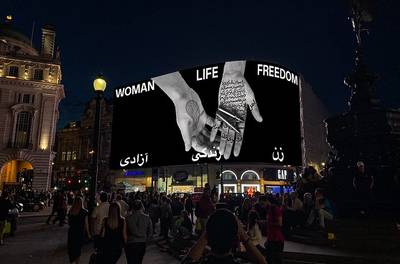

Knowing the genealogy of women’s resistance in Iran since the turn of the century helps us see recent events not as unprecedented ruptures and a sudden awakening of women in an archaic patriarchal society but as the accumulation of multiple resistances throughout our modern and contemporary history in the face of an ever-shape-shifting patriarchy.
READRepresentation of Disobedient Bodies: A Critical Reading of Shirin Neshat’s Visual Language
Comprehending the discrepancy between the representation of the multitude of experiences of people’s protests in Iran, reflected in their own photographic and moving images, and the detached artistic creations of diasporic artists like Neshat.
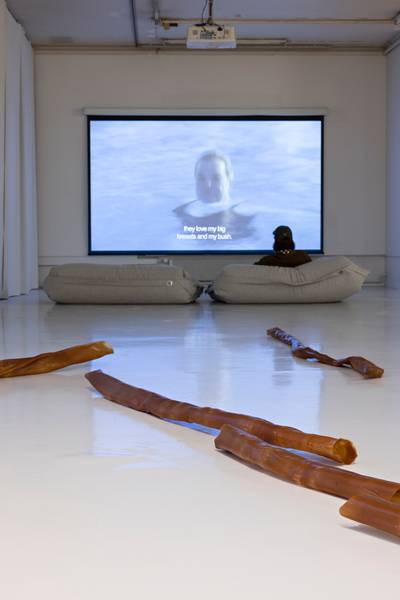

The works, in relation to each other, successfully embody the curatorial statement, ‘we are an inseparable part of nature and therefore always connected to each other.’ They weave together the concepts of life, love and death, therefore, establishing a coherent larger framework of the exhibition. This thematic consistency is also visible in the aesthetic production with a striking palette of cool earth tones. While the composition of the works within the confines of the gallery makes perfect sense, the overall exhibition raises more questions than it answers in regards to its larger socio-political implications. Collectively their works hardly do justice to the subject matter that they deal with.
READOn Love? A Review of the Exhibition ‘Unity’ at SIC Space
Najia Fatima iterates how it is crucial to remain critical of spaces that claim universality without adequately centering marginalised voices.
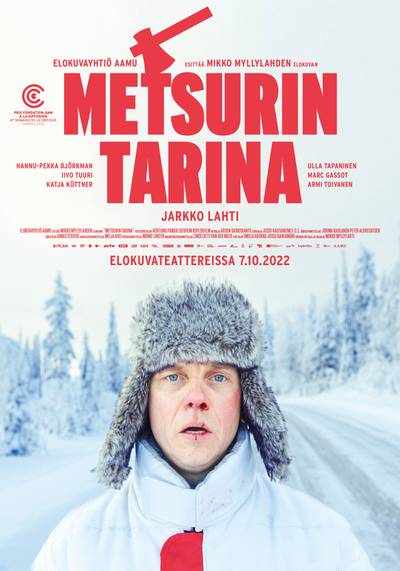

My point of view in this review revolves around the interpretation of the two-fold structure of The Woodcutter Story. Underneath the film’s exterior of entertaining black comedy exists a poetic-existential interior. My actual question in this review concerns the relationship between these two layers. If the “deep” concern of the film is the existential question of whether senseless suffering could generate a sense of meaning, it cannot be answered directly without a recourse to religious register. In that case, no authoritative answer can be given except by appeal to the “superficial” level of the actual events and their logic.
READMay you live in interesting times: A Review of The Woodcutter Story
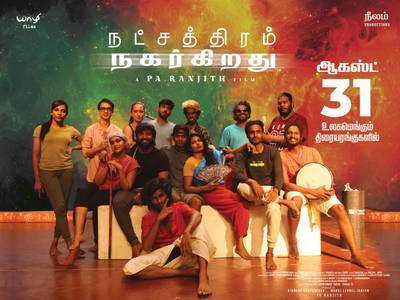

Who gets love in popular culture? I have been thinking about this question for a decade now. Soon after its release last August, I went to watch a film that surprised me in ways I had never imagined. Pa Ranjith’s latest film, Natchathiram Nagargiradhu, which translates to ‘a star shoots across,’ seems to have answered all our questions about the idea of contemporary love. Trust me, there is an interpretation for everyone - inter-caste, inter-faith, queer love, inclusivity, sexuality, woman as a category, genderless casteless love.
READWho Gets Love in Popular Culture? A Review of Pa Ranjith’s Film Natchathiram Nagargiradhu
How can a film reverse the language of cinema in its aesthetics, gaze, and culture formed by shared histories, collective experience, solidarity and a movement of assertion?


When I reflected on the works from Speed Records, I questioned if there was supposed to be an element of parody. Was the use of the candy-colored paint intentional to comment on the glorification of US mass consumerism, specifically within the subculture of motorsports? Many works were created out of resin; was this to comment on the permanence of US-American mass culture? Or even the permanence of US-American cultural hegemony within the vast amounts of consumed nostalgia? Like consumable products, cultural media omnisciently persists through microplastics, carbon emissions, or successful propaganda.
READWhen Home Follows You Home: A Review of Anssi Kasitonni’s Speed Records
Gabriella Presnal review focuses on reflective versus restorative nostalgia and the Americanization of Finnish visual and contemporary culture.
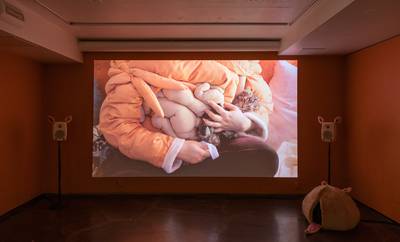

The exhibition opens with a series of sculptural elements installed in the first of Titanik’s two exhibition rooms. The dominant colour is a peachy orange, and the materials range from glazed ceramics to smooth silicone and fluffy fake fur. Some objects are similar to everyday things related to keeping cats, a climbing tree, climbable shelves on the wall, and cat beds. This everyday impression gets nudged toward the uncanny by some extra elements. From a shelf of the climbing tree, some sort of goo is dripping onto the floor, like a cat had lost the surface tension holding it together and became shapeless matter.
READThe Unbearable Existence of Kittens: A Review of Reija Meriläinen’s Snugglesafe